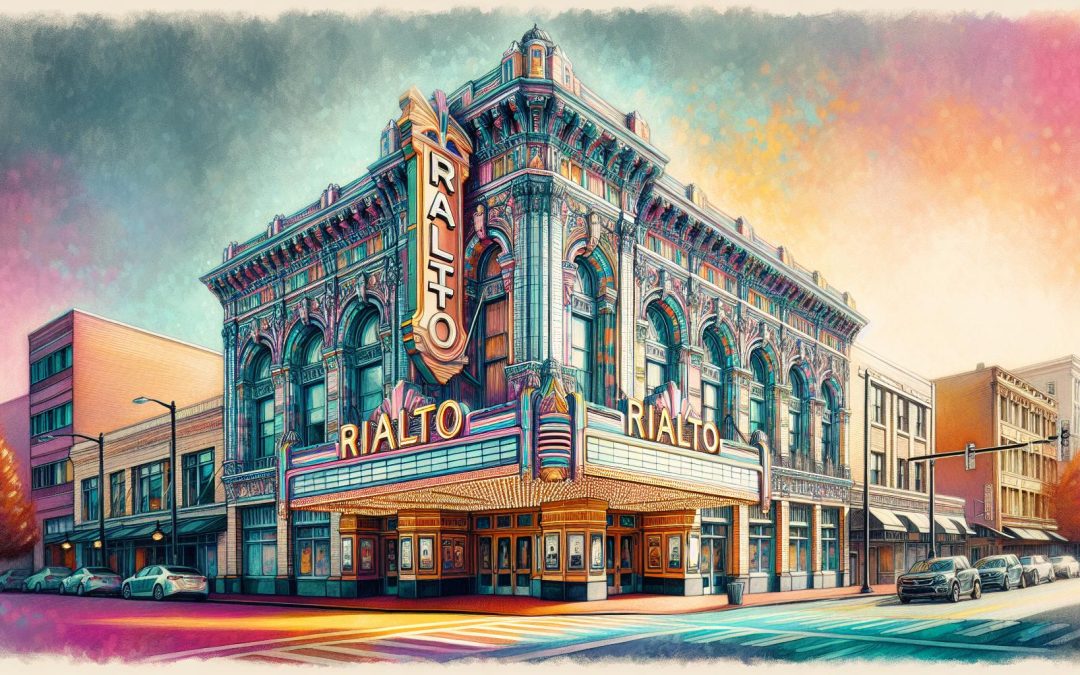I’ve always been fascinated by the stories that old buildings tell, especially theaters where countless tales have unfolded not just on stage, but in the very fabric of their walls. Tacoma, Washington, with its rich performing arts history, is home to some of the most enchanting historic theaters in the state.
Walking through Tacoma’s streets, it’s like stepping back in time. Each theater has its own unique story, contributing to the city’s vibrant cultural tapestry. From the grandeur of the Pantages Theater to the intimate charm of the Rialto, these venues have hosted a myriad of performances, echoing the evolving tastes and trends of generations.
Join me as we explore these historic gems, uncovering the magic that has kept the spotlight shining on Tacoma’s performing arts scene for over a century.
The Beginnings of Tacoma’s Theater Scene
When I first started digging into the roots of Tacoma’s theater scene, I was immediately struck by its rich and multifaceted history. Tacoma’s theatrical beginnings can be traced back to the late 1800s, a period when the city was just starting to shape its identity.
Back then, Tacoma was a bustling hub, fueled by the Northern Pacific Railroad. This strategic positioning not only boosted the local economy but also established Tacoma as a cultural destination in the Pacific Northwest. It wasn’t long before the first theaters began to spring up, answering the community’s growing appetite for entertainment and the arts.
One of the earliest theaters, the Tacoma Theater, opened its doors in 1888. It was a marvel of its time, boasting lavish architecture and interiors that mirrored the grand opera houses of Europe. Here, locals and visitors alike gathered under the opulent chandeliers to watch a blend of vaudeville shows, operas, and plays. These performances were more than just entertainment; they were a window to the wider world of culture and creativity that Tacoma’s residents so craved.
As the 20th century dawned, more theaters joined the ranks, each with its unique flair and contribution to Tacoma’s burgeoning performing arts scene. The Pantages and Rialto, both of which still stand today as testaments to this golden era, began their storied histories. These venues hosted an incredible array of talent, from touring Broadway productions to silent films, and later, the jazz and big band eras that swept the nation.
What’s fascinating is how these theaters not only entertained but also played a pivotal role in the community. They became gathering spots, places where people from all walks of life could come together and share in the magic of live performance. It was in these grand halls and modest auditoriums that Tacoma’s cultural identity was forged.
Throughout these formative years, I can only imagine the sense of wonder and excitement that filled the air as the curtains rose and the lights dimmed. It was a time of cultural awakening for Tacoma, one that laid the groundwork for the vibrant performing arts scene that thrives in the city today.
Architectural Marvels: Pantages Theater
When I first set foot inside the Pantages Theater, it’s difficult not to be immediately struck by its opulence. The theater, which opened its doors in January 1918, stands as a testament to the lavish architectural trends of the early 20th century, particularly those favoring the Beaux-Arts style. It’s a style characterized by grandeur and richly detailed decoration, and Pantages Theater embodies this with its ornate plasterwork, luxurious seating, and a stunning crystal chandelier that demands attention the moment you enter the space.
The theater was originally funded and envisioned by Alexander Pantages, a vaudeville magnate who sought to create a chain of theaters across the West Coast that offered unparalleled elegance and comfort. The Tacoma Pantages Theater wasn’t an exception. Designed by B. Marcus Priteca, it was crafted to be a place not just for performances but as an architectural highlight of Tacoma itself. The façade, with its intricate terra cotta details, presents a majestic front that hints at the splendor found within.
But it’s not just the visual appeal that makes the Pantages Theater an architectural marvel. Over the years, it has undergone several renovations to preserve its historic charm while integrating modern conveniences and technical upgrades essential for today’s performances. These renovations have been careful to maintain the integrity of the original design, ensuring that the theater remains a bridge between past and present artistic aspirations. One of the most significant updates was in the 1980s, when the theater’s seating capacity was reduced from over 1,500 to about 1,200, allowing for more comfortable and accessible seating arrangements without sacrificing the intimate feel that makes live performances so captivating.
Another noteworthy aspect is the theater’s acoustics. Designed in an era before electronic amplification, the theater’s architecture plays a crucial role in carrying sound naturally from the stage to the audience, enveloping them in the performance. This acoustic design has been preserved and enhanced over the years, ensuring that whether it’s a dramatic spoken word performance or a powerful symphony, the sound quality remains impeccable.
Rialto Theater: A Hidden Gem
Walking into the Rialto Theater in Tacoma, Washington, is like stepping back in time. This historic venue, nestled in the heart of Tacoma’s downtown, isn’t just a theater; it’s a time capsule of the city’s performing arts history. Built in 1918 as part of the vaudeville circuit, the Rialto has morphed through various phases, from a vaudeville house to a movie theater, and now, a vibrant center for the performing arts. Unlike many theaters of its age, the Rialto has retained much of its original charm, thanks to meticulous preservation efforts.
The facade of the Rialto Theater, with its classic brick exterior, transports you to an era when these cultural institutions were the heart of American entertainment. Once inside, I was struck by the ornate details that adorn every nook and cranny. The ceiling, painted with delicate murals, is an absolute marvel, and the original balconies offer a glimpse into the grandeur of early 20th-century theater architecture. The seating capacity, although reduced from its original number to allow for more comfortable accommodations, still welcomes a large audience, creating an intimate yet lively atmosphere for performances.
One cannot discuss the Rialto without mentioning its acoustics. Designed at a time when electronic amplification was nonexistent, the theater’s acoustics were crafted for natural sound projection. Even today, performers and audiences alike rave about the clarity and richness of sound during shows. This sonic quality ensures that whether it’s a classical music concert, a theater production, or a modern dance performance, the experience is immersive.
Aside from aesthetics and acoustics, the Rialto Theater also serves as a beacon of community engagement in Tacoma. Through its doors have passed generations of theatergoers, performers, and students. The theater’s programming is diverse, ranging from local theater productions to international music concerts, engaging a broad spectrum of the community. Educational programs aimed at young performers ensure that the theater isn’t just preserving its past but also nurturing future talent.
The Legacy of Historic Theaters in Tacoma
When I think about the rich tapestry of performing arts in Tacoma, it’s impossible not to be drawn into the stories and architectural beauty of its historic theaters. The legacy these venues hold isn’t just in their walls and decor; it’s embedded in the hearts of those who’ve passed through their doors, whether as performers or audience members. As someone deeply fascinated by Tacoma’s cultural history, I’ve discovered that each theater has a unique voice that echoes the past while welcoming the future.
Diving into the histories of places like the Rialto Theater, it’s evident that they were more than entertainment venues; they were communal hubs where art and culture flourished. These buildings saw the transformation of Tacoma from a fledgling town into a bustling urban center, with the arts at the forefront of its identity. Historic theaters in Tacoma bore witness to the evolution of performing arts, from vaudeville and silent films to orchestral concerts and modern dance performances. Their ability to adapt and remain relevant through decades of societal changes is nothing short of remarkable.
What truly sets Tacoma’s historic theaters apart is their commitment to preserving the past while nurturing future talents. Through educational programs and youth engagement, these institutions ensure that the legacy of performing arts continues to thrive. I’ve seen firsthand the impact of such initiatives on young performers, instilling in them a deep respect for the arts and providing them with a platform to showcase their talents.
The theaters have also become architectural icons within Tacoma, drawing visitors not just for performances but also to admire their beauty. The meticulous preservation efforts are evident in each detail, from ornate murals to splendid balconies, ensuring that the essence of early 20th-century theater architecture remains alive. When I step into one of these theaters, it’s like being transported to another era, yet the vibrancy and energy are unmistakably modern.
This delicate balance between preserving heritage and embracing progression is what makes Tacoma’s historic theaters truly special. They’re not just buildings; they’re living, breathing entities that continue to influence and inspire. As someone deeply passionate about the arts, witnessing the ongoing love affair between Tacoma and its historic theaters is both heartwarming and inspiring.
Conclusion
Tacoma’s historic theaters, especially the Rialto, are more than just buildings. They’re a testament to the city’s rich cultural tapestry and its ongoing narrative of growth and renewal. As I’ve delved into their stories, it’s clear they’re not merely about preserving bricks and mortar but about keeping the spirit of community and creativity alive. They remind us that art isn’t just for the moment; it’s a bridge connecting our past to our future. So next time you’re in Tacoma, take a moment to visit these landmarks. You’re not just stepping into a theater; you’re becoming part of a story that continues to unfold.
Hey there! I'm Paul Carter, a lifelong Tacoma resident. I've seen Tacoma change from a sleepy small town to a thriving modern city. I love to explore the unique places and stories that Tacoma has to offer. This website is my love letter to my hometown, sharing its hidden gems and insider tips. So, come explore Tacoma with a true local!

